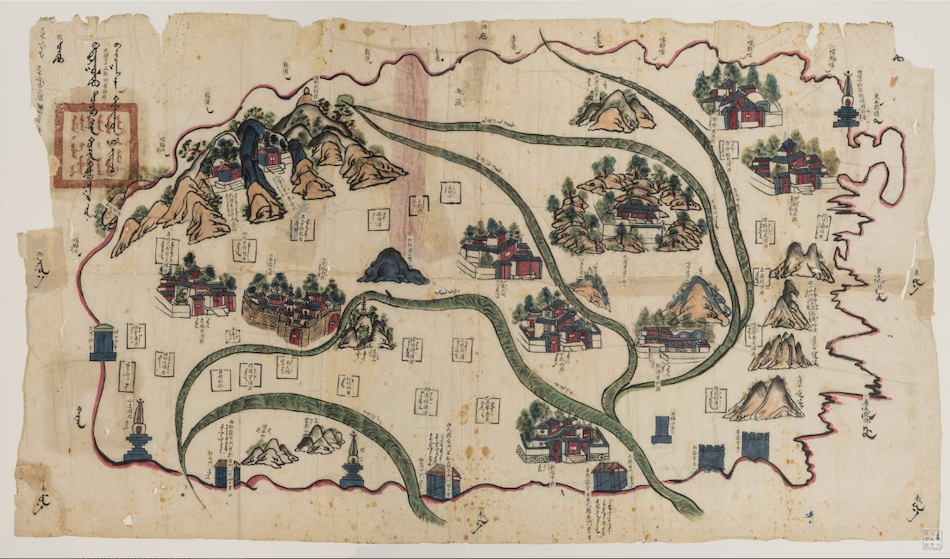
An Idealized Banner: Analyzing a Map of a Banner on the Sino-Mongol Border Dated 1907
Isabelle Charleux GSRL (CNRS-EPHE/PSL)
It is widely recognized that maps are cultural artefacts influenced by the context of their creation and intended audience. They make deliberate choices, favour specific, often political interests, and categorize, include, and exclude information, thereby “culturalising” the natural world (Smith 1998). Moreover, maps frequently “lie” (Monmonier 2017).
The maps of Mongol banner territories provide extensive details on local geography, history, and topography during the late Qing period (19th century-1911). Although commissioned by the central Qing government, these maps are emic representations, reflecting how the banner princes themselves perceived their domains. Similar to an ID card for a banner, these maps were intended to indicate political centres, borders, distances to neighboring banners’ seats, the names and titles of rulers, the number of mobilisable men, and significant geographical features, including sacred mountains. Despite the Qing government's issuance of standardized guidelines to create uniform maps for integration into the empire's grand map, few followed these instructions. Consequently, a great diversity of maps emerged, ranging from nearly empty and abstract maps to elaborately painted “picture-maps” rich in detail.
These maps are typically Inserkarte and seem to float within the frame, blending concrete and idealized geographies. Debates about their accuracy arose, questioning whether they were precise enough to resolve border disputes or if they distorted spatial distributions to create a more favourable visual narrative. This paper examines a map of the Sino-Mongol border from 1907. Utilizing contemporary Chinese and Japanese local gazetteers and maps, it highlights the choices made by the Mongol mapmakers, particularly the elements they omitted. The paper argues that this map depicts an idealized situation that does not align with the contemporary political and ethnic realities.
